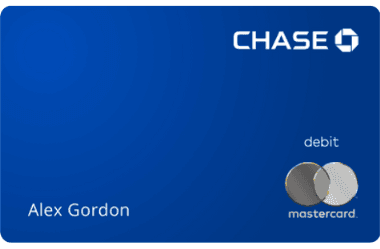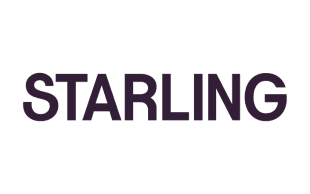There are lots of similarities between Starling and Chase: they’re both app-based banks that offer current accounts that are loaded with perks, including – with Chase – cashback on spending.
So, how do you choose between these 2 rivals? We take a look at some of their similarities and differences to help you decide.
Vital statistics
With Chase’s free (and only) current account, you’ll get a blue numberless debit card, with your details stored on the app so only you can see them. Starling’s free (and only) current account comes with a teal-coloured vertical card.
Neither bank has branches (Chase only has branches in the US), but Starling lets you deposit money into your account at Post Office counters, which isn’t possible with Chase. While Starling lets you cash cheques using the app, Chase doesn’t. Both banks let you withdraw money from ATMs.
Both Starling and Chase offer a linked savings account, with Chase’s account paying 4.5% AER for the first 12 months.
Starling has a UK banking licence and Chase is a subsidiary of JPMorgan which is authorised by the Prudential Regulation Authority (PRA) and regulated by the FCA and the PRA. In both cases, this means that your money will be protected by the Financial Services Compensation Scheme (FSCS) which covers deposits of up to £120,000 per person.
There’s no overdraft available on the Chase current account, but you can apply for one with Starling. The interest you’re offered will depend on your personal circumstances and credit score, although Starling’s overdraft interest rate scale starts at 15% EAR.
In Finder’s 2025 Banking Customer Satisfaction Awards, 100% of respondents said they’d recommend Chase to a friend, with 93% saying the same about Starling.
Round 1: App features
You’ll find some similarities between the Chase and Starling mobile banking apps, but Starling’s has a little more to offer. Both give you a visual breakdown of spending, but with Starling your transactions will be automatically placed into pre-set categories such as eating out and groceries. This then generates daily, weekly and monthly spending insights so you’ll have a clearer idea of what you’re spending where and be able to set budgets.
Both apps also offer a round-up feature, where your spare change from transactions will automatically be rounded up and saved. Starling moves your money to a “Savings Space” and you can multiply the spare change you save by 2, 5 or 10. While Starling doesn’t pay interest on its round-up account, Chase pays interest of 5% AER. Each year, Chase will move your round-up funds to your current account.
Your salary can be paid into either your Chase or Starling account, and you can set up direct debits. In addition, you can freeze and unfreeze your card in the apps, and contact the customer service teams through in-app chats. With Starling, you can also make international payments, but this is not possible with Chase.
- Winner: Starling. Its app offers a wider range of features, including spending categorisation and international payments.
Round 2: Spending in the UK
It’s free to spend on both the Chase and Starling cards in the UK and both cards have the standard contactless limit of £100.
You can also add your Chase or Starling card to Apple Pay, Samsung Pay and Google Pay.
However, Chase customers can earn 1% cashback on grocery, transport and fuel card purchases (up to £15 per month). To get the maximum cashback, you would need to spend £1,500 a month. Customers also need to deposit a minimum of £1,500 a month in order to earn any cashback at all, after the first year.
There’s no cashback offered with Starling. Both Chase and Starling offer free ATM withdrawals in the UK, with daily limits in place. Chase lets you withdraw up to £500 a day. Meanwhile, Starling has a daily withdrawal limit of £300 but has a limit of 6 withdrawals per day.
- Winner: Chase. It’s so close but we’ve given it to Chase purely because you can earn cashback on your spending.
Round 3: Using the card abroad
 |  | |
| Free foreign transactions | Unlimited | Unlimited |
| Free foreign ATM withdrawals | Up to £1,500 per month | Unlimited |
| Find out more |
Both Chase and Starling use the Mastercard exchange rate for foreign transactions and neither card charges a fee.
Foreign ATM withdrawals are also free for both, but there are limits. Chase has a limit of £1,500 per calendar month and you will not be able to withdraw anything over this. There’s also a daily withdrawal limit of £500.
There’s no monthly limit with Starling, but the daily limit for cash withdrawals is lower at £300.
Unlike Starling which lets you send money abroad through the banking app, Chase accounts can’t be used to make international payments.
- Winner: Starling. Again, it’s unbelievably close but Starling wins due to having no monthly limit on cash withdrawals.
If you don’t think you will qualify for Chase’s cashback offer then we think Starling stands out as the winner, but there’s also no harm in trying out both banks”
Round 4: Account types
 |  | |
| Free account | ||
| Premium account | ||
| Joint account | ||
| Teen account (for 16- and 17-year olds) | ||
| Kids' account or card | ||
| Business account | ||
| Find out more |
Both Chase and Starling only offer the one personal current account which has no monthly maintenance fee. With Chase you can have up to 20 accounts open at once and a maximum of 10 saver accounts.
Starling also offers a joint account, business account and teen account, as well as a kids’ card called Starling Kite which is managed through the parent’s Starling account. Chase only offers a savings account.
- Winner: Starling, for offering a wider range of accounts.
Round 5: Signing up
 |  | |
| Apply through the app | ||
| Quick application | ||
| Credit check | ||
| Card delivery fee | Free | Free |
| Card delivery timescale | 5-7 working days | 3-5 working days |
| Find out more |
You can apply for both the Chase and Starling accounts through their respective mobile apps in just a few minutes. Both only conduct “soft” credit searches (rather than a “hard” credit check) which will not affect your credit score.
With Starling, once you’ve opened your account you’ll need to order your contactless Mastercard debit card via the app which should arrive within a few days. Chase says you should also receive your card within a few days.
- Winner: Tie. The opening process is similar for both accounts.
Round 6: Customer reviews
On reviews site Trustpilot, Chase has a score of 3.7 out of 5 from over 13,900 reviews. Starling has a score of 4.2 from 45,000 reviews. These were checked in September 2025.
Reviews praised Chase for its ease of use, though some people feel that the deposit required to earn ongoing cashback is too high.
Starling customers also found the app easy to use, but there was frustration about technical problems.
In our 2025 Finder Customer Satisfaction Awards, Chase scored 4.3 out of 5, with 100% of respondents saying they would recommend the brand. Starling also scored 4.4 out of 5 and had a 93% recommendation.
- Winner: Tie. Starling has a better Trustpilot score but Chase shades it in the Finder Customer Satisfaction score.
Overall winner: Is Chase better than Starling?
Both the Chase and Starling bank accounts have a lot to offer, which means this isn’t an easy decision to make. Both accounts offer streamlined apps to help you budget and save, fee-free transactions abroad and FSCS protection.
While Chase offers up to £15 a month in cashback, you have to pay in at least £1,500 a month to qualify for any cashback at all, after the first year. Plus, rule changes mean the cashback is now limited to certain spending only.
If we had to pick one, we’d say Starling takes the top spot. As well as being able to pay in cash at the Post Office and apply for an overdraft, the Starling app is more advanced.
But what works for one person might not work for another, so if you’re not sure, you could always try both options to see which one works best for you.
Sources
More guides on Finder
-
Monzo Max review: Is the account worth it?
Is the Monzo Max account worth applying for?
-
Is Monzo Perks worth it?
Are Monzo Perks, Monzo Max and Monzo Extra worth the money? See our analysis in this video review.
-
Best online-only banks in the UK
Online-only banks have some limitations, but they also tend to offer handy features that might convince you to switch.
-
How to withdraw cash from an ATM without your debit card
If you’ve forgotten or misplaced your bank card and need to take out cash, several options are available. From where to get cashback to what you need to take to a branch, here’s what you need to know.
-
How to get a prepaid debit card without ID
Prepaid cards are a good option for people who don’t have any traditional forms of ID. Discover what you could use instead.
-
BuildMyCreditScore review
Discover more about how BuildMyCreditScore works, which banks it connects to and how long it will take to improve your credit score.
-
Banks that allow you to pay cheques in online
Discover which banks let you pay in cheques online and how to do it.
-
Advantages and disadvantages of an overdraft
Find out more about the pros and cons of an overdraft.
-
Santander Edge Up review
Level up your cashback earning potential with the Santander Edge Up current account. Find out about its features and benefits in our review.
-
Monzo bank account and card review
Is Monzo’s app-only current account the right option for you? Read our review to get the low-down on all of the features of the account, its card and the app.




